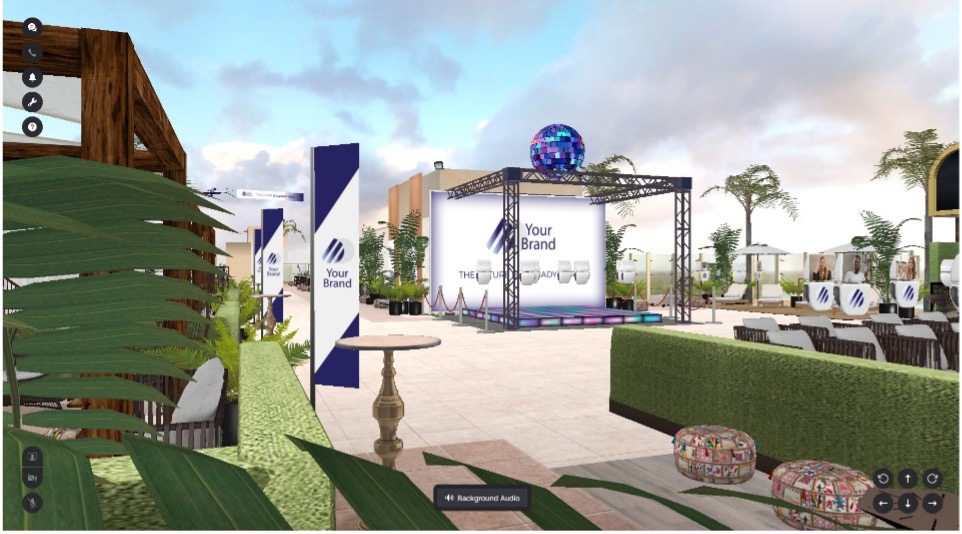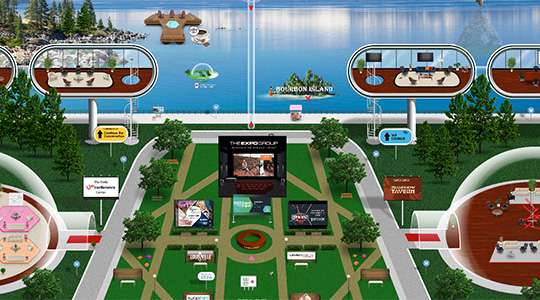- The experience must offer opportunities to see people face to face. In many metaverse environments, you’re not always sure who you are truly talking to. Someone’s avatar could be an elephant, or a dog and you never see a person’s face. For productive business use, your metaverse system needs to show the actual person (aka like a mini zoom call) when you are talking to them. This makes connecting with the person more professional and personal.
- Content is king. Make sure that you invest time and resources to deliver rich and relevant content to metaverse visitors, otherwise, they will never come back. For example, if you are a show organizer, perhaps you could offer a pre-tradeshow exhibitor metaverse session that educates exhibitors on how to maximize their investments for the show. You could include tips and tricks to stand out on the show floor and other key learnings. You could even offer a special code for attendees that would give them access to a VIP event during the show. You just need to make sure that your content will be valuable, educational, and worthy of their time.
- Make it fun. While everyone has a different definition of what a metaverse experience is, most expect it to be fun and memorable. There are numerous things you can do to make it engaging. You could have a “scavenger hunt” where you invite groups of people to gather, meet and find certain clues or “tags” around your metaverse space. What about a metaverse DJ or live band to entertain your guests. The beauty of a metaverse is that you can let your imagination run wild and the result will be an immersive experience that visitors will never forget.
- Conduct business. Many metaverse systems allow for private areas in which people can be invited for confidential meetings or discussions. Your metaverse space should include secret, private areas that are only accessible via password. These “whisper suites” can allow you to have private conversations with key customers or prospects yet still enjoy the metaverse experience at the same time. The intrigue of a metaverse alone offers a unique draw to others that may increase the odds of them joining you for a business conversation.
- BONUS: Ensure ROI. The cost to build a metaverse space for an event can vary dramatically depending on several factors:
-
- Is it a one-time event or is it a recurring event? If recurring, how long does it need to be active online?
- What is the expected attendance?
- How custom does your metaverse space need to be from a design perspective? Sometimes you can use “off-the-shelf” graphics and themes to save design time and money.
- Do you need to incorporate special features such as password gating, limited attendance areas, gamification or entertainment features? If so, that will add to your costs.
The overall cost can range from a few thousand dollars to tens of thousands depending upon these and other variables. Should you choose to sell sponsorship spaces within your metaverse, you could recuperate those costs quickly or even deliver a profit.
Metaverse technology is waiting for you to leverage in the effort to help you connect your community of show attendees in new ways. Learn more about how you can integrate a metaverse experience in tandem with your next show or event by contacting us HERE. Whatever you do – don’t settle for ordinary.





